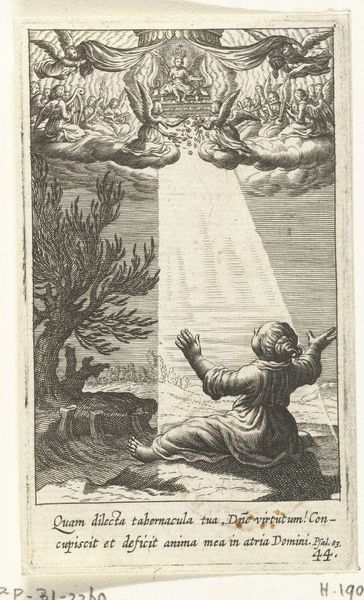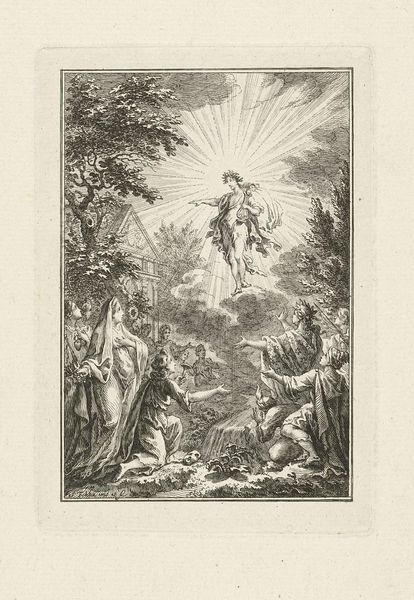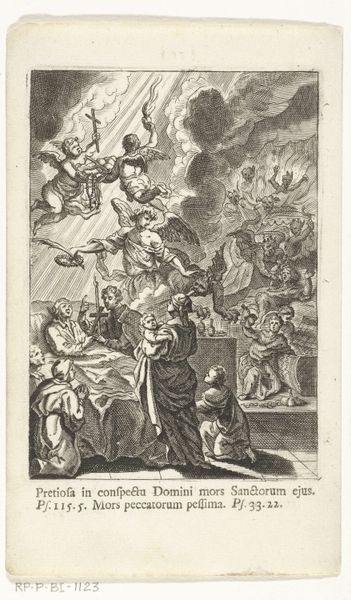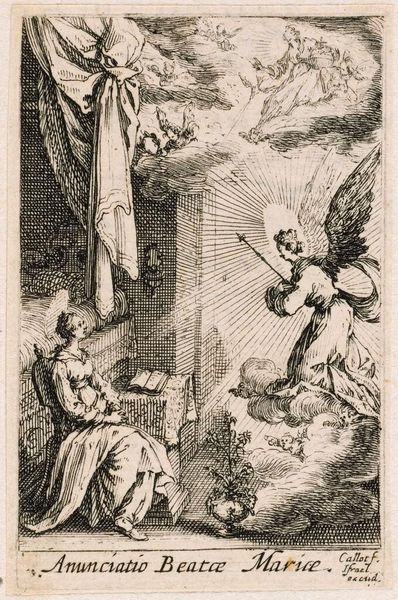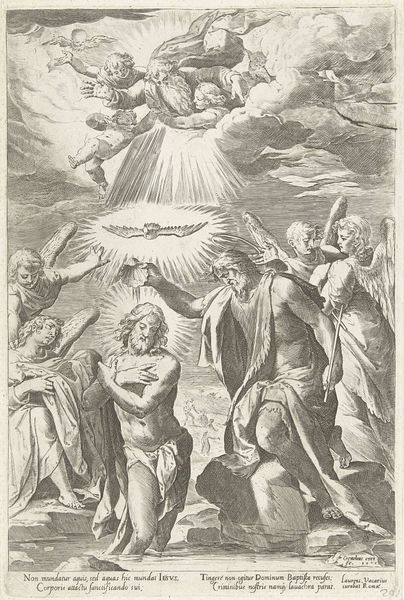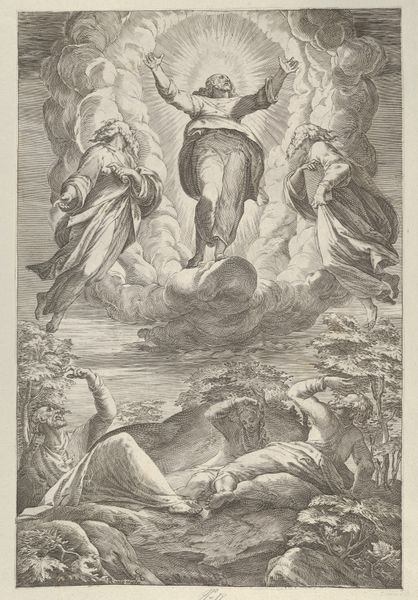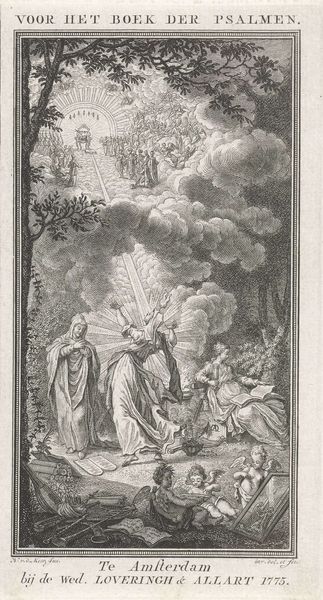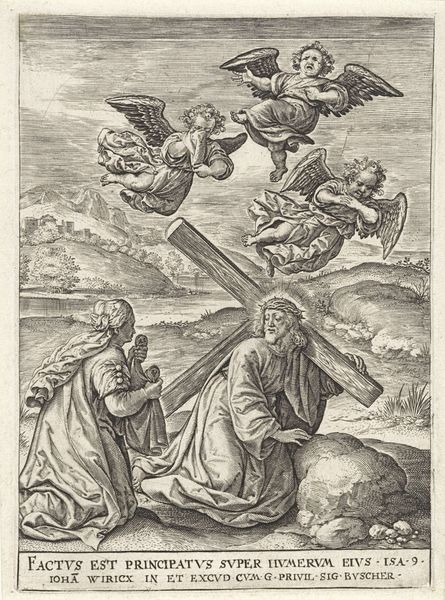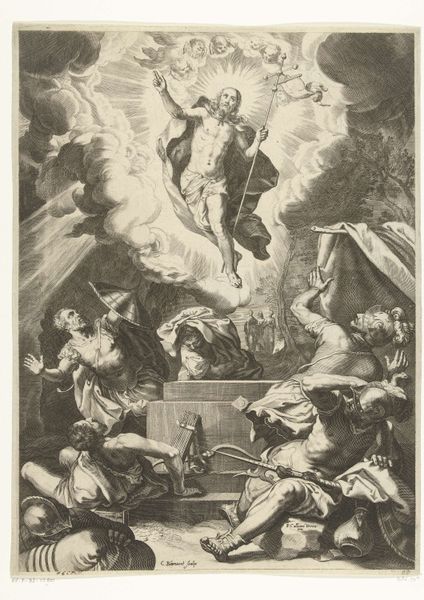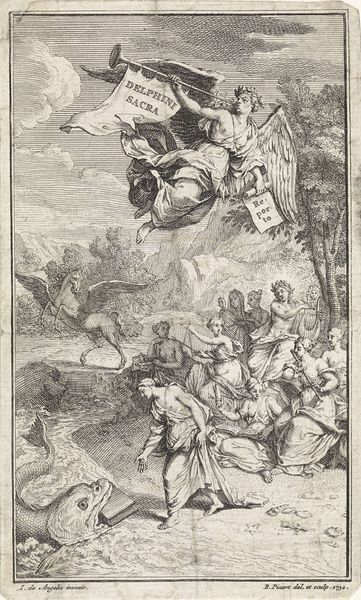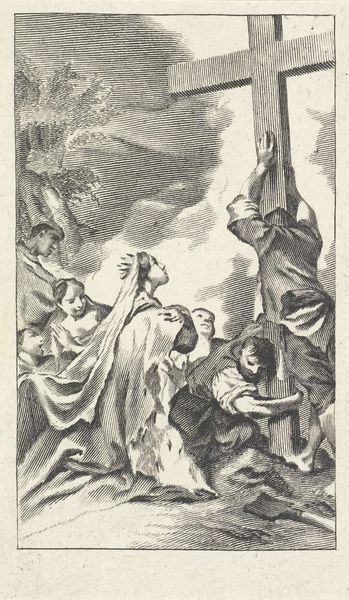
print, engraving
#
narrative illustration
#
narrative-art
#
baroque
# print
#
pen illustration
#
old engraving style
#
line
#
history-painting
#
engraving
Dimensions: height mm, width mm
Copyright: Rijks Museum: Open Domain
Editor: This is "Christus als kind ontvangt passiewerktuigen," or "Christ as a Child Receives the Instruments of the Passion" by Boëtius Adamsz. Bolswert, made between 1590 and 1622. It’s an engraving, currently housed in the Rijksmuseum. The beams of light immediately strike me. What compositional elements draw your attention? Curator: Immediately, the emphasis lies within the stark contrast between the grounded earthly plane and the divine emanation from above. Bolswert masterfully employs a dynamic interplay of linear perspective. The tools of carpentry below signify labor and earthly existence, and these contrast strikingly with the floating symbols of future suffering. Do you observe how the composition directs the eye toward the young Christ, positioned at the convergence of these two realms? Editor: Yes, I see it now! The angel carrying the cross directs my eyes directly toward him. It is such a visual emphasis on Christ. So, what does this placement imply, would you say? Curator: Formally speaking, Christ acts as a visual linchpin. The dynamic rays both illuminate and divide. The use of contrasting textures contributes further: coarse, earthly textures juxtaposed against the ethereal quality of the divine. It subtly proposes a duality: Christ's participation in the earthly, human experience while remaining spiritually tethered to the divine will. What message does this starkness ultimately send about mortal and divine natures? Editor: The piece certainly compels one to consider human purpose. It uses lines and shapes to guide thought about faith! Curator: Indeed, this is a wonderful introduction to the way forms and composition are structured. I’m grateful for the conversation!
Comments
No comments
Be the first to comment and join the conversation on the ultimate creative platform.
